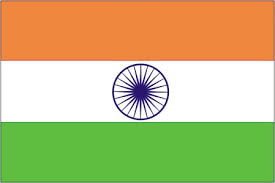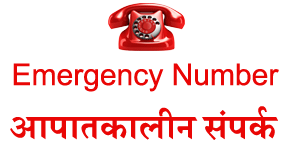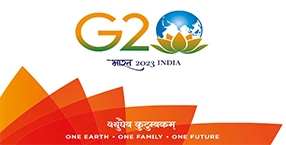IAEA
IAEA
The International Atomic Energy Agency (IAEA) is the key agency to promote cooperation in the field of peaceful uses of nuclear energy, an initiative of President Eisenhower enunciated in his famous ‘Atoms for Peace’ speech. After approval of the IAEA Statute, on 23 October 1956 by 81 States, the Agency was created on July 29, 1957. As of April 2021, 173 States are members of IAEA, which employs 2560 multidisciplinary professional and support staff from more than 100 countries.
The principal objective of the Agency is to “accelerate and enlarge the contribution of atomic energy to peace, health and prosperity throughout the world” and to ensure so far as it is able, “that assistance provided by it or under its supervision or control is not used in such a way as to further any military purpose”.
The Agency thus functions under two broad categories namely: (i) promotional activities, which it is expected to carry out through technical assistance to the interested Member States in areas of nuclear power, applications of nuclear energy, strengthening of safety and security measures etc and (ii) verification activities, which it carries out through implementation of safeguards, which it can apply to a given State’s activities in the field of atomic energy, at the request of that State.
Governance
The two Policy-Making Organs (PMOs) of the IAEA, each governed by its respective rules of procedure, determine policy and oversee the main aspects of the IAEA’s work. These include: (a) The General Conference of all the IAEA member states, which convenes annually in September. It is the main governing body of the Agency. It studies and approves the IAEA’s program and budget, and makes decisions on matters brought to its attention by the Board of Governors, the Director General or member states ; and (b) the 35-member Board of Governors, which generally meets five times a year. It makes recommendations to the General Conference on the Agency’s program and budget, authorizes the IAEA Director General to conclude and implement safeguards agreements, considers reports by the DG, establishes safety standards, and votes on resolutions. This body is also responsible for appointing the Director General, with the agreement of the General Conference.
For the 2021–2022 period, the new composition of the 35-member IAEA Board is as follows: Argentina, Australia, Austria, Brazil, Burundi, Canada, China, Colombia, the Czech Republic, Egypt, Finland, France, Germany, Guatemala, India, Ireland, Japan, the Republic of Korea, Libya, Malaysia, Mexico, New Zealand, Pakistan, Peru, Poland, the Russian Federation, Senegal, Slovenia, South Africa, Spain, Switzerland, the United Arab Emirates, the United Kingdom of Great Britain and Northern Ireland, the United States of America and Viet Nam. The current Chairman of the Board of Governors is Ambassador Shin Chae-Hyun, from the Republic of Korea.
The Director-General of the IAEA is Mr. Rafael Mariano Grossi who assumed office on 3 December 2019. Mr Grossi is a diplomat with over 35 years of experience in the field of non-proliferation and disarmament. In 2013, he was appointed Ambassador of Argentina to Austria and Argentinian Representative to the IAEA and other Vienna-based International Organizations.
India and the IAEA
India has played an active role in the IAEA since its inception. The fa ther of the Indian nuclear program, Dr. Homi Bhabha, was responsible for Vienna’s selection as the seat of the Agency. Being a ‘designated Member’, India has served on the Board of Governors of the IAEA since its inception, other designated members being-Argentina, Australia, Canada, China, Egypt, Finland, France, Germany, Japan, Russia, UK, and the US.
ther of the Indian nuclear program, Dr. Homi Bhabha, was responsible for Vienna’s selection as the seat of the Agency. Being a ‘designated Member’, India has served on the Board of Governors of the IAEA since its inception, other designated members being-Argentina, Australia, Canada, China, Egypt, Finland, France, Germany, Japan, Russia, UK, and the US.
India has throughout underlined the importance of the Agency’s role in the promotion of peaceful uses of nuclear science and technology including nuclear power while maintaining due support for its safeguards related responsibility. India actively participates in IAEA’s Advisory Groups and Technical Committees. India also contributes to the Agency’s activities by way of providing experts and conducting training programs, workshops and occasionally providing equipment. India is one of the founder members of the IAEA’s International Project on Innovative Reactors and Fuel Cycles – INPRO and contributes the US $ 50,000 annually towards the program.
India has close cooperation with the Agency’s Programme of Action for Cancer Therapy (PACT) and has donated the indigenous Bhabhatron radiotherapy machine to several countries, most recent being an upgraded version to Madagascar delivered in February 2021. India has a well-functioning National Cancer Grid (NCG) of more than 200 cancer care centres, staffed with specialists. India launched NCG Vishwam Cancer Care Connect in 2019. With this, the NCG is open to cancer hospitals and other relevant institutions in other countries. Eleven centres outside India are currently part of this grid and we welcome more such centres to join. The objective is to remove disparity in cancer care by sharing expertise and capabilities with other countries. In addition to the NCG and at the bilateral level, India has been supporting many countries in the their fight against cancer.
India is a party to Convention on Nuclear Safety (CNS), Convention on Early Notification of a nuclear accident, Convention on Assistance in the case of a nuclear accident or radiological emergency and Convention on Physical Protection of Nuclear Materials (CPPNM) and its 2005 amendment. India has also signed the Convention on Supplementary Compensation for Nuclear Damage (CSC). India is also a participant in the IAEA Illicit Trafficking Database (ITDB).
India and the IAEA signed an Agreement for Application of Safeguards to Civilian Nuclear facilities in India on 2 February 2009. The Agreement entered into force on 11 May 2009. An Additional Protocol (AP) to the Safeguards Agreement between the Government of India and the IAEA for the Application of Safeguards to Civilian Nuclear Facilities entered into force on 25 July 2014.
The then DG, IAEA, Mr. Yukiya Amano called on the Hon'ble PM, Mr. Narendra Modi during his visit to India in March 2015.
Statements delivered by Indian delegation at IAEA
(all files are downloadable PDF)
- Board of Governor Statements

- GC statements

- September 2020: Statement by Dr. K.N. Vyas, Chairman, Atomic Energy Commission and Secretary, Department of Atomic Energy of India At the 64th General Conference of IAEA

- September 2019: Statement by Mr. K N Vyas Chairman, Atomic Energy Commission and Secretary, Department of Atomic Energy of India At 63rd General Conference of IAEA

- September 2018 - Dr. Sekhar Basu, Chairman of the Atomic Energy Commission and Leader of the Indian Delegation addressing 62nd General Conference of the International Atomic Energy Agency, Vienna on 19th September 2018
 . Vienna
. Vienna - September 2017 - Dr. Sekhar Basu, Chairman of the Atomic Energy Commission and Leader of the Indian Delegation addressing 61st General Conference of the International Atomic Energy Agency, Vienna on 20th September 2017
 . Vienna
. Vienna - September 2016 - Dr. Sekhar Basu, Chairman of the Atomic Energy Commission and Leader of the Indian Delegation addressing 60th General Conference of the International Atomic Energy Agency,
 Vienna
Vienna - September 2015 - Dr. Ratan Kumar Sinha, Chairman of the Atomic Energy Commission and Leader of the Indian Delegation addressing the 59th General Conference of the International Atomic Energy Agency,
 Vienna
Vienna - September 2014 - Dr. Ratan Kumar Sinha, Chairman of the Atomic Energy Commission and Leader of the Indian Delegation addressing the 58th General Conference of the International Atomic Energy Agency,
 Vienna
Vienna - September 2013 - Chairman of the Atomic Energy Commission addressing the 57th General Conference of the International Atomic Energy Agency
 , Vienna
, Vienna - July 2013 - Statement by Minister of State in the Prime Minister’s Office HE Mr. V. Narayanasamy at the IAEA Ministerial Conference on Nuclear Security on 1 July 2013,
 Vienna
Vienna - June 2013 - Statement by Chairman, Atomic Energy Commission at the 2013 IAEA International Ministerial Conference on Nuclear Power in the 21st century held on June 27-29, 2013
 , St. Petersburg, Russian Federation
, St. Petersburg, Russian Federation - September 2012 - Chairman of the Atomic Energy Commission addressing the 56th General Conference of the International Atomic Energy Agency
 , Vienna
, Vienna - September 2011 - Chairman of the Atomic Energy Commission addressing the 55th General Conference of the International Atomic Energy Agency
 , Vienna
, Vienna - June 2011 - IAEA Ministerial Conference on Nuclear Safety (Statement by Chairman AEC)
 , Vienna
, Vienna - September 2010 - 54th General Conference of IAEA (Statement by Chairman, AEC),
 Vienna
Vienna - September 2009 - 53rd General Conference of IAEA (Statement by Chairman, AEC)
 , Vienna
, Vienna - October 2008 - 52th Session of General Conference of IAEA (Statement by Chairman, AEC)
 , Vienna
, Vienna - September 2007 - 51th Session of General Conference of IAEA (Statement by Chairman, AEC)
 , Vienna
, Vienna - September 2006 - 50th Session of General Conference of IAEA (Message from Prime Minister Dr. Manmohan Singh)
 , Vienna.
, Vienna. - September 2006 - 50th Session of General Conference of IAEA (Statement by Dr. Anil Kakodkar, Chairman, Atomic Energy Commission and Leader of the Indian Delegation),
 Vienna
Vienna - September 2005 - 49th Session of General Conference of IAEA
 , Vienna
, Vienna - September 2004 - 48th Session of General Conference of IAEA
 , Vienna
, Vienna















